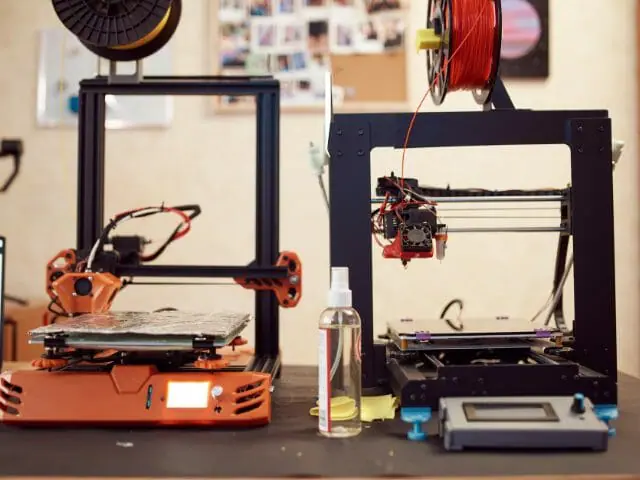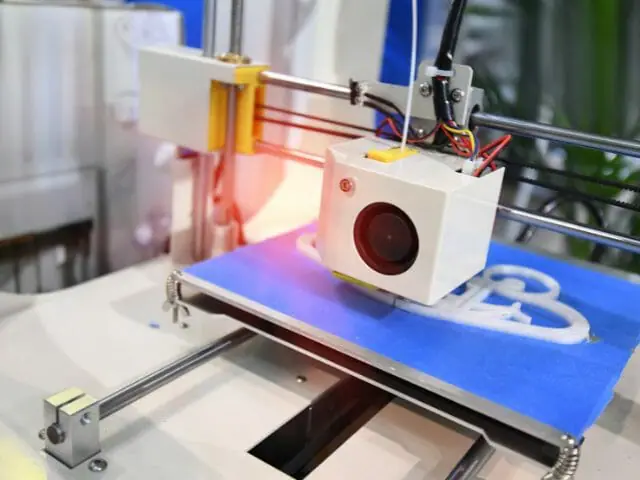3D printing is more popular than ever before. Enthusiasts print functional 3D objects such as cups, tools, battery converters, gun parts, and food. The printing possibilities appear to be boundless.
You read it right, but…
3D printing requires considerable investment for the printer itself, the printing material, and electricity to make the magic happen.
So, how much electricity does a 3D printer use? Several factors affect electricity consumption, including the size, complexity, and design of the project, as well as casting material, heat filament diameter, and threshold temperature.
This guide explores everything about 3D printer electricity costs.
How To Calculate 3D Printer Power Consumption
Considering what goes into 3D printing, you may reasonably start to wonder about the cost, including power consumption. You might ask, ‘Do 3D printers use a lot of electricity? How much power do 3D printers use?’
Here are three ways to learn about your 3D printer power consumption.
Look Into Your 3D Printer Specifications

So how much energy does a 3D printer use?
Their power supply converts alternating current (AC) into direct current (DC) and never exceeds the maximum rating.
Assuming that the particular 3D printer you purchased features a 30A 12V power source, it will most likely have a max Watt limit of 360 Watts (Current x Voltage = Power). Before you get worried about such high power, keep in mind that your printer only reaches this limit while heating up in preparation for printing. Once printing begins, the power usage becomes lower.
If you haven’t bought a 3D printer yet, the manufacturer’s website is the best place to find information about the printer’s power consumption.
Consider the Printer’s Components
3D printers feature different essential components that require different amounts of electric power. For instance, the hot end requires different energy ratings from the stepper motors, print bed, or head movement mechanics when executing functions.
The heated bed consumes much of the power supply, followed by the hot-end heater. Stepper motors often consume up to 40% of the total power wattage, while Head Movement mechanics use up to 30%.
Nevertheless, the average electricity consumption for most 3D printers is between 50W and 1900W per hour, depending on the type of filament, temperature maintenance, size of the print bed, and more.
Consider Other Factors

A few more factors affect how much power a 3D printer uses. Here is a breakdown:
- When the heating conductivity of the hot end and print bed do not maintain hot temperatures, the 3D printer will consume more power.
- Small and thin materials take longer to print, thereby consuming more electricity, unlike large and thick materials.
- Heat loss to the environment results in overall more power consumption.
- Large and complex control boards have higher power usage.
In addition to the above factors…
The exact cost of electrical power for a 3D printer will vary from one place to another.
In Washington, locals pay just over 10 cents per kWh. In Connecticut, the cost goes up to nearly 21 cents per kWh. Hawaii is the most expensive state at 35.57 cents per kWh for residential properties.
The average electric power rate across the country comes out to 13.75 per kWh. This rate translates into an average cost of about 1.7 cents an hour or about 40.8 cents for a 24-hour 3D print run.
So, does a 3D printer use a lot of electricity? The short answer is it depends. You have to consider power consumption when printing more than the average enthusiast.
Here is a YouTube video on how you can gauge your 3D printer’s electricity consumption.
Are 3D Printers Cost-Effective?
When getting a 3D printer, you want a model with the features you need that is cost-effective. Getting the right 3D printer for your needs will save you money during purchase and maintenance bills, including electricity.
To determine whether a 3D printer is cost-effective, consider these three things.
- The printer’s energy usage
- The number of hours the printer has to run
- The local price of electricity
One of the most popular 3D printers is the Creality Ender 3. The printer is a top seller because of its affordability and ease of use. Beginners can dive right into simple projects with it.
My personal experience with the Creality Ender 3 has been a good one. I found that my printer draws about 50 watts while heating up and 30 watts while printing with PLA. That indicates a cost of $0.1 to $0.15 per hour. This means it would cost me $1.5 if my printer ran for 10 hours. Sounds inexpensive, right?
Additionally, this 3D printer measures 235mm x 235mm x 250mm, although the printable area is 220mm x 220mm x 250mm. This size is ideal for most small projects, but you might want to purchase a bigger 3D printer. If so, your power consumption will go up accordingly.
Another popular option is the BCN3D Sigma D25. This impressive 3D printer measures 420 mm× 300mm × 200 mm. You can print two items at the same time. The size means there are more possibilities. However, the BCN3D Sigma D25’s power consumption is 650W, which is nearly double what other home 3D printers consume.
But what can you do if your 3D printer consumes a lot of power?
How To Reduce Power Costs Of 3D Printing
For 3D printing enthusiasts, the cost of running their machine a few hours a day or even just a few times a week will have little impact on their power bill.
Reduce Print Speed

One of the easiest ways to bring down the cost of 3D printing is to adjust your slicer’s print speed. Making the machine print faster will consume more watts per hour, but the shortened print time will offset this.
It is important to note that reducing print speed brings down the overall quality of the end product. Because of this, you might want to increase print speed only with objects that do not require the best quality.
Use Larger Nozzles
3D printer nozzles vary in size from 0.4mm to 1.2mm. The majority of 3D printers come with a standard 0.4mm nozzle which is ideal for most prints. Switching to a bigger nozzle is an option with both benefits and drawbacks.
Larger nozzles put out more filament in less time. Using a larger 3D printer nozzle can bring down power consumption. However, this technique affects overall quality, so you might want to use it for large items that do not require much detail.
Scale Down Printing
3D printing costs are a legitimate concern, especially for those who print regularly. Printing less for lower power costs is an option but not one that all 3D enthusiasts will embrace. Another option is to scale down your prints.
Some prints will have to be a definite size. Gun parts or tools, for example, cannot be made smaller than they need to be.
Use PLA
PLA is the 3D printing material with the lowest melting point. Therefore, PLA Prints require less heat and have a lower power cost.
One drawback here is that PLA is not as durable as other 3D printing materials, limiting its practical applications.
Insulate the Heated Bed

Getting the bed to the right temperature requires a lot of electric power. However, insulating your 3D printer’s bed will allow it to heat up much quicker and save you money in the long run.
The best way to achieve this is to buy an insulation mat. Foam and aluminum insulation mats reduce heating times by dispersing heat appropriately and maintaining stable temperatures. Some insulation mats utilize other materials for greater efficiency and better power consumption.
Insulate the Hot End
When you insulate the hot end, it will maintain the perfect temperature that the filament needs. The hot end will supply the filament with the right heat despite the cooling fans emitting cool air.
Enclose the 3D Printer
These enclosures prevent the filaments from warping, reduce the printer’s sound levels, and lock in any harmful printing fumes.
Limit Errors
Do 3D printers use a lot of electricity? And, how much power does a 3D printer use? According to experts, a 40% print failure rate and even higher can be expected from most 3D printers, causing a high power bill.
Printing failures can be caused by the operator, machine, or design errors. Printing something more than once because of an error will spike power consumption.
While some errors are hard to avoid, focusing on a proper design from the start will bring failure percentages down.
Conclusion
So how much electricity do 3D printers use? Well, not much. Most people who print moderately will see their electricity bill go up slightly. Others who like to use their 3D printers as much as possible for business or as a hobby can spend considerably more.
It is essential to be aware of the electric power cost associated with 3D printing and ways to bring it down. Try one of the suggestions outlined above or even all of them to keep costs down. Above all, enjoy your 3D printer and have a great time making magic with it!
Last Updated on July 25, 2022 by Emily
- Facebook9
- Twitter21
- Pinterest67
- 97shares




